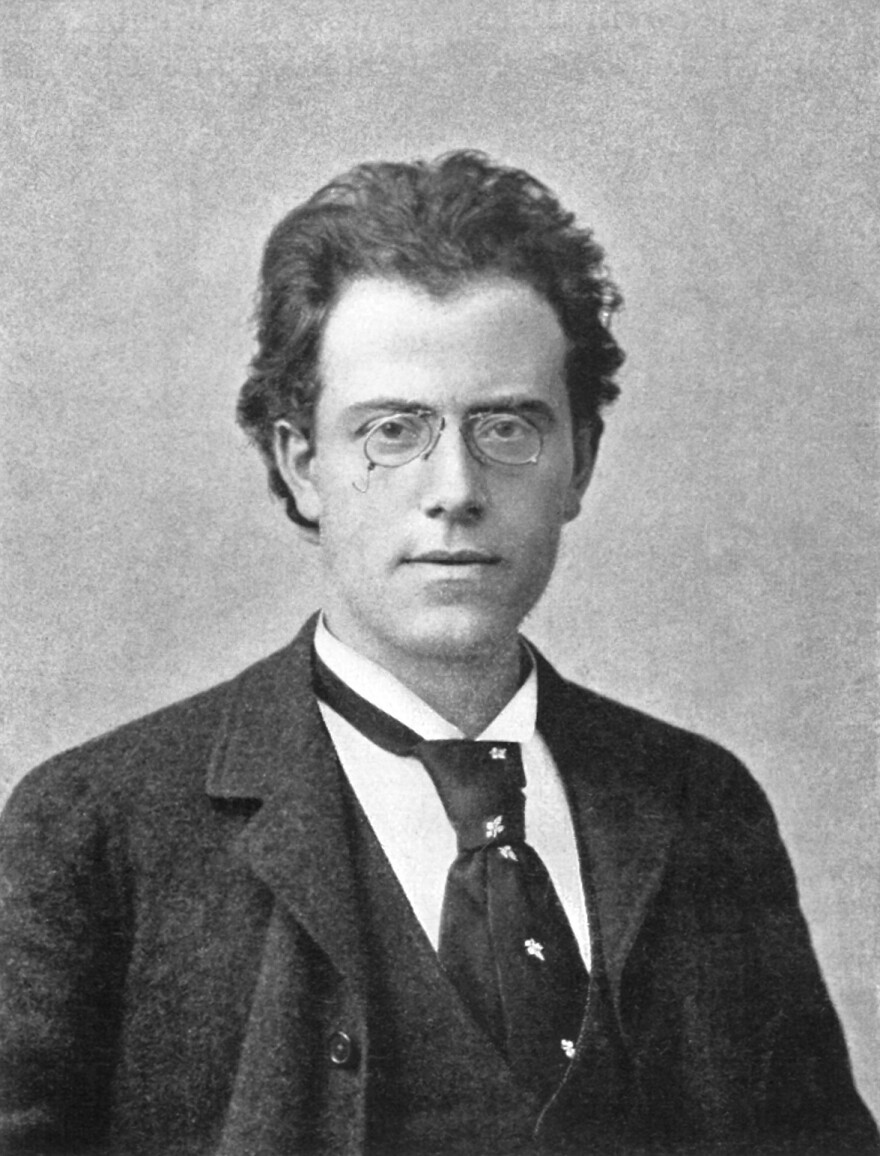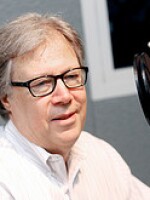Earlier this week, it was reported that the autograph manuscript of Mahler’s Symphony No. 2 (“Resurrection”) will be auctioned at Sotheby’s this fall.
It wasn’t front-page news, but in the music world this is a big deal.
For one thing, the estimates are that the 232-page score – written in fits and starts during the early 1890s and entirely in Mahler’s own hand – will easily fetch the highest price ever paid for a musical manuscript. The figure being thrown around is in the $5-6 million range.
For another, it’s news because autographs of really important pieces of music are rarely offered for sale. (An exception was Stravinsky's “Rite of Spring,” a working draft of which was auctioned off in London in 1982. It brought just over $500,000.)
The fact is that most really significant manuscripts are already in the hands of museums or university libraries or other scholarly institutions. There are a lot of good reasons for this, including the fact that individuals don’t tend to collect music manuscripts the way they collect, say, rare books.
But the real news here is that the score’s upcoming auction will close the book on one of the strangest -- and yet oddly endearing -- episodes in the history of classical music.
The score is being offered for sale because its owner, Gilbert Kaplan, died a few months ago at age 74.
Some of you may know the Gilbert Kaplan story, but I’m sure many don’t. Either way, it’s worth briefly summarizing here because there’s never been a story quite like it.
Gilbert E. Kaplan was born in 1941 in New York City, into an affluent family. He attended Duke University, the New School, and New York University, focusing primarily on law and economics. After school, while still a young man, he began to make his fortune (ultimately estimated at more than $100 million) as the founder and publisher of Institutional Investor, a publication that offered investing advice to brokers and money managers. Kaplan’s empire later expanded globally to include lectures, conferences, and other services relating to investing.

His would have been a notable career had he simply lived out his days as a high-powered Wall St. guru.
But he developed an almost unimaginable parallel life, one that gradually supplanted, and eventually overshadowed, his career as an investment wizard.
One afternoon in 1965, when he was 24, Kaplan attended by chance a rehearsal of the Mahler Second at Carnegie Hall, conducted by the legendary Leopold Stokowski. Kaplan had not been particularly musical. He had taken some piano lessons as a kid, but later acknowledged that he had rarely practiced, and indeed had never even properly learned how to read music.
Nevertheless, Kaplan later said of the Carnegie Hall encounter, “I walked out of the hall a changed man.”
That is something of an understatement.
Kaplan became fixated on the piece. He was fascinated not only by the music itself, but its poetic, non-sectarian, ultimately affirmative texts (some by the 18th century German poet Friedrich Klopstock, and some by Mahler himself), which primarily concerned themselves with mortality and the idea of an afterlife.
Kaplan committed himself to learning as much about the symphony as he could.
And in due course he became driven to master it in – as he saw it -- the ultimate way: by learning how to conduct it.
Friends and colleagues gently pointed out to him that this was not a plausible, or even rational, ambition. This was not akin to, say, George Plimpton suiting up and running a few plays for the Detroit Lions. Nor, a bit closer to home, was it like William F. Buckley, Jr. learning to stumble through some Bach inventions on the harpsichord (and then endlessly congratulating himself) while simultaneously putting out the National Review.
The main, though not only, difference was one of magnitude. Gustav Mahler’s Second Symphony is one of the most colossal pieces of music ever written. It’s roughly 90 minutes long. Its final movement alone is around 40 minutes – longer than any entire Mozart symphony. It is scored for huge orchestra, mixed choir, organ, offstage brass ensemble, and two vocal soloists. Veteran professional conductors approach it with fear and trembling, if at all.
Still, Kaplan persisted. He engaged a string of conductors to work with him, often spending eight or ten hours a day studying the music and practicing his conductorly gestures. Along the way, he sought and received counseling from the likes of Sir Georg Solti, James Levine and Zubin Mehta, who were impressed by his seriousness, if not his sense of practicality.
In 1982, having by now spent nearly two decades immersing himself in the piece, he arranged to conduct a public performance at Lincoln Center’s Avery Fisher Hall (now David Geffen Hall), with the American Symphony Orchestra and the Westminster Choir. He hired the forces himself, at an estimated cost of $100,000.
Kaplan, along with nearly everyone else, expected this to be both his first performance and his last. It was, he felt, something he simply had to do.
Although an unofficial press blackout had been imposed (reportedly at the orchestra’s request) a review subsequently appeared in the Village Voice. It was, against all odds, glowing. The Voice’s critic, Leighton Kerner, called it “one of the five or six most profoundly realized” performances of the piece he had heard in a quarter century of concert going.
From that moment on, Kaplan’s life was increasingly taken over by Mahler and his symphony. Offers to conduct it poured in from orchestras all over the world. He made a generally well-received recording in 1987, with the London Symphony Orchestra. For a while, that recording outsold every other recording of the piece, at a time when there were already several dozen in print.
Kaplan, initially derided by the classical community, became recognized as a legitimate authority on Mahler, and was invited to be part of the scholarly team that prepared the new critical edition of the Second Symphony.
It was also in the 198o's that he acquired the manuscript score, purchasing it from the estate of conductor Willem Mengelberg, who had received it as a gift from Mahler’s widow, Alma, in 1920.
Kaplan was generous with the manuscript, placing it with the Pierpont Morgan Library, and seeing to it that academics and musicians were granted access to it. He also posted a facsimile score online – the first time the piece had been made available in that format.
By and by he made a second recording (only Leonard Bernstein and a handful of others can make that claim), this time with the Vienna Philharmonic, of which Mahler himself had once been music director.
Over the years, Kaplan wound up conducting the piece more than a hundred times, very possibly the highest total of any conductor in history. It was the only work he ever conducted in public. He never took a fee, and he always made a point of conducting the vast, sprawling piece from memory.
Now, with the autograph score about to pass into new hands, perhaps some new Mahleresque journey may be about to begin.
But for the moment, what can we say about the Gilbert Kaplan story?
Maybe just this: that what had initially seemed destined to be merely an arrogant vanity trip, a pathetically delusional Walter Mitty fantasy, became instead a captivating, and in many ways beautifully mysterious parable of art and inspiration, of obsession and humility.
The story compels us to ask, among many other questions: Why does a man, already successful beyond the dreams of most of us, set aside his given profession and devote himself to a single piece of late-19th century Austrian music, written by a composer whose name, at the outset, he barely knew?
Kaplan himself was asked essentially that question by a reporter in 1993.
His reply:
“There’s a real explanation of life and death in that music. I wanted to get to the bottom of it.”
Reach Steve Metcalf at spmetcalf55@gmail.com.


